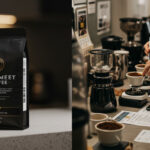
When Did Traditional Coffee Become Popular? A Timeless Brew
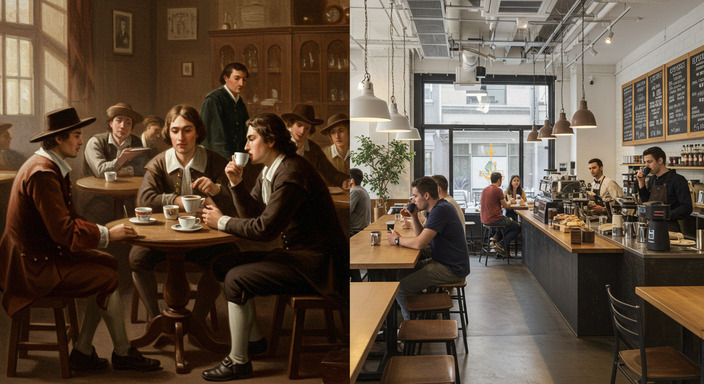
Table of Contents
ToggleThe Origins of Traditional Coffee
Early Beginnings in Ethiopia and the Middle East
Our journey with coffee begins in the lush highlands of Ethiopia, where legend has it that a goatherd named Kaldi discovered the energizing effects of coffee beans after noticing his goats became unusually lively upon eating them. This serendipitous moment marked the birth of a beverage that would captivate the world. By the 15th century, coffee had made its way to the Arabian Peninsula, where it became an integral part of daily life. In Yemen, the port city of Mocha emerged as a hub for coffee trade, and the drink was embraced in Islamic culture for its ability to keep worshippers alert during long nights of prayer.
In the Middle East, coffeehouses, or qahveh khaneh, became social epicenters where people gathered to discuss politics, philosophy, and art. These early coffeehouses were not just places to drink coffee but also forums for intellectual exchange, laying the groundwork for the global coffee culture we know today.
The Spread of Coffee to Europe and the Americas
By the 17th century, coffee had crossed the Mediterranean and reached Europe, where it was initially met with skepticism and even fear. Some called it the “bitter invention of Satan,” but it wasn’t long before the drink’s allure won over the masses. Coffeehouses sprang up in cities like London, Paris, and Vienna, becoming hubs of intellectual and social activity. In England, they were dubbed “penny universities,” as the cost of a cup of coffee granted access to stimulating conversations and ideas.
The journey of coffee to the Americas began in the 18th century, when European colonists brought coffee plants to the New World. The fertile soils of the Caribbean and Central America proved ideal for coffee cultivation, and soon, coffee plantations flourished. By the 19th century, coffee had become a staple in the United States, with the rise of diner culture and the iconic coffee break cementing its place in American life.
This expansion of coffee’s reach wasn’t just about the drink itself—it was about the connections it fostered, the routines it shaped, and the simple pleasures it brought to people across the globe.
The Rise of Coffee in America
The Boston Tea Party and Coffee’s Cultural Shift
In 1773, the Boston Tea Party marked a pivotal moment not only in American history but also in the nation’s beverage preferences. As colonists revolted against British-imposed tea taxes, coffee emerged as a patriotic alternative. This shift wasn’t just about politics; it was a cultural transformation. Coffee became a symbol of independence and resilience, weaving itself into the fabric of American life. By the early 19th century, coffee was no longer just a drink—it was a ritual, a way to start the day with purpose and pride. Its warmth and boldness mirrored the spirit of a burgeoning nation.
The Role of Diners and Coffeehouses in the 20th Century
As the 20th century dawned, coffee found a new home in the bustling diners and coffeehouses that dotted the American landscape. Diners became more than just places to eat—they were community hubs where people gathered over steaming mugs of coffee to share stories, debate ideas, and find comfort in the familiar. Meanwhile, coffeehouses in cities like New York and San Francisco became havens for artists, writers, and thinkers, fostering creativity and connection. These spaces cemented coffee’s role as a cultural cornerstone, a drink that brought people together in moments of both everyday routine and extraordinary inspiration.
Whether served in a chipped diner mug or sipped in a cozy corner of a coffeehouse, coffee became more than a beverage; it became a way of life. Its presence in these iconic spaces reflects its enduring appeal and its ability to adapt to the changing tides of American culture.
Traditional Brewing Methods Through the Ages
The Evolution of Drip Coffee
The story of drip coffee begins in the early 20th century, when innovations like the Melitta Bentz filter system revolutionized how Americans brewed their morning cup. By 1908, Bentz’s invention of the paper filter allowed coffee lovers to enjoy a cleaner, smoother brew, free of grounds. This method became a staple in homes and diners across the country, offering a simple yet effective way to start the day. The iconic drip coffee maker, popularized in the 1970s, further cemented its place in American culture. Its convenience and consistency made it a beloved fixture in kitchens everywhere.
The Percolator: A Timeless Classic
Before drip coffee took center stage, the percolator was the king of brewing. Dating back to the 19th century, this rugged device relied on boiling water to extract coffee’s robust flavors. Its bubbling sound and rich aroma evoke a sense of nostalgia, reminding many of family gatherings and campfire mornings. Though its popularity has waned with the rise of modern methods, the percolator remains a symbol of tradition and simplicity, cherished by those who appreciate its hearty, unfiltered brew.
The French Press: A Global Influence
Introduced to the U.S. in the mid-20th century, the French press brought a touch of European elegance to American coffee culture. Originating in France (as the name suggests), this method uses a plunger to separate grounds from the liquid, resulting in a full-bodied, rich cup. Its minimalist design and ability to highlight coffee’s natural flavors have made it a favorite among enthusiasts who value craftsmanship and authenticity. The French press continues to inspire a sense of ritual, encouraging drinkers to slow down and savor the process.
Why Traditional Methods Still Resonate Today
In an age of instant gratification and high-tech gadgets, traditional brewing methods endure because they offer more than just coffee—they offer experience, connection, and tradition. Whether it’s the comforting hum of a drip coffee maker, the rustic charm of a percolator, or the refined artistry of a French press, these methods remind us of coffee’s cultural roots. They invite us to pause, to appreciate the simple act of brewing, and to connect with generations of coffee drinkers who came before us. In a world that often moves too fast, traditional methods anchor us to the timeless joy of a well-made cup.
Coffee’s Role in Daily Life and Culture
The Morning Ritual – A Sacred Start
For many, the day doesn’t truly begin until that first sip of coffee. The aroma of freshly brewed beans wafting through the kitchen is one of life’s simple yet profound pleasures. Whether it’s a strong, bold espresso or a comforting cup of drip coffee, this morning ritual is a universal constant. It’s not just about the caffeine—it’s a moment of quiet reflection, a pause before the chaos of the day takes hold. This ritual, passed down through generations, reminds us of the timeless appeal of traditional coffee.
The Coffee Break – A Moment to Reconnect
Beyond the morning, the “coffee break” is a cherished tradition in workplaces and homes alike. It’s more than just a pause—it’s a chance to step away, recharge, and connect with others. Whether it’s sharing a pot of coffee with colleagues or catching up with friends at a local café, this practice underscores coffee’s role as a social catalyst. The coffee break is a reminder that life’s most meaningful moments often happen over a simple cup of coffee.
Coffee as a Symbol of Connection
Throughout history, coffee has been a bridge between people and cultures. From the bustling coffeehouses of Europe to the intimate gatherings in Ethiopian homes, it has always been a symbol of community and tradition. In the United States, diner-style coffee culture exemplifies this—where a steaming mug is more than a beverage; it’s an invitation to conversation, comfort, and camaraderie. This enduring connection reminds us that coffee is not just a drink, but a shared experience.
“Coffee is a language in itself.” – Jackie Chan
Preserving Tradition Through Coffee
Traditional coffee brewing methods, like the classic percolator or the French press, are more than just techniques—they’re a nod to the past. These methods, often passed down through families, keep the essence of coffee’s cultural roots alive. They remind us to slow down, savor the process, and appreciate the artistry behind every cup. In a fast-paced world, these traditions ground us, offering a sense of continuity and belonging.
When Did Traditional Coffee Reach Its Peak?
The Mid-20th Century Boom in Coffee Consumption
The mid-20th century was a golden era for traditional coffee. Post-World War II America saw coffee consumption skyrocket, becoming a staple in households across the nation. The rise of diners and the ubiquity of the coffee break in workplaces solidified its place in daily life. Coffee was more than just a drink; it was a symbol of connection, warmth, and routine. Families gathered around the percolator, and friends met at diners for a cup of joe, often accompanied by hearty conversation. This era marked the peak of traditional coffee’s cultural dominance, as it became ingrained in the fabric of American life.
The Rise of Specialty Coffee and Its Impact on Traditional Brews
As the late 20th century approached, the coffee landscape began to shift with the emergence of specialty coffee. Pioneered by brands like Starbucks, this movement introduced consumers to a new world of arabica beans, latte art, and single-origin brews. While specialty coffee brought innovation and sophistication, it also posed a challenge to traditional coffee’s simplicity. However, traditional coffee didn’t fade away—it evolved. Many coffee lovers continued to cherish the straightforward comfort of a classic drip brew or a diner-style cup. Specialty coffee, rather than replacing traditional brews, coexisted with it, offering a broader spectrum of coffee experiences while reminding us of the timeless appeal of the traditional cup.
The Timeless Appeal of Traditional Coffee
Nostalgia in Every Sip
There’s something profoundly comforting about the aroma of traditional coffee brewing in the morning. It’s more than just a beverage; it’s a ritual, a moment of stillness before the day begins. For many, it evokes memories of childhood—watching a parent pour the first cup, the sound of a percolator gurgling on the stove, or the warmth of a mug shared with loved ones. Traditional coffee carries with it a sense of history, a connection to the past that modern trends can’t replicate.
Simplicity at Its Best
In a world dominated by complex coffee concoctions and elaborate brewing methods, traditional coffee stands out for its simplicity. Whether it’s a straightforward drip brew or a classic French press, it doesn’t need fancy syrups or latte art to shine. Its appeal lies in its purity—just coffee, water, and perhaps a splash of cream or sugar. This simplicity makes it accessible, a familiar comfort that transcends generations and cultures.
A Staple in Daily Routines
For millions, traditional coffee is the cornerstone of their daily routine. It’s the fuel that starts the day, the midday pick-me-up, or the evening companion during quiet moments. Its role is as much about habit as it is about taste. Whether it’s sipped slowly at a diner, shared over a work meeting, or enjoyed alone on a porch, it’s a constant in lives that are otherwise ever-changing.
Cultural Roots and Shared Experiences
Traditional coffee is deeply woven into the fabric of cultures around the world. In America, it’s synonymous with diners, road trips, and family gatherings. It’s the drink that sparks conversations, fosters connections, and creates lasting memories. Its enduring popularity is a testament to its ability to bring people together, offering a sense of community in every shared cup.
“Coffee is a language in itself.” – Jackie Chan
Why It Endures
- Accessibility: Easy to make, affordable, and widely available.
- Versatility: Enjoyable black, with cream, or sweetened.
- Emotional Connection: Tied to memories, traditions, and personal routines.
Celebrating Traditional Coffee Today
In a world that often feels rushed and ever-changing, traditional coffee remains a comforting constant. Its rich aroma, familiar taste, and the rituals surrounding it connect us to the past while grounding us in the present. Whether you’re savoring a cup at home or honoring time-honored traditions, there’s something profoundly satisfying about embracing the simplicity and warmth of classic coffee.
How to Enjoy Classic Coffee at Home
Bringing the essence of traditional coffee into your home is easier than you might think. Here are a few tips to create a timeless coffee experience:
- Choose quality beans: Opt for freshly roasted, whole beans and grind them just before brewing to capture the fullest flavor.
- Master the basics: Whether you prefer a French press, pour-over, or classic drip coffee maker, focus on the fundamentals—proper water temperature, the right coffee-to-water ratio, and patience.
- Create a ritual: Take a moment to savor the process. The act of brewing and pouring can be as meditative as it is rewarding.
Remember, it’s not about perfection—it’s about the joy of the experience. As the saying goes, “Coffee is a language in itself.”
Honoring Coffee Traditions in a Modern World
Even in our fast-paced, tech-driven lives, there’s room honor the traditions that make coffee so special. Here’s how you can keep the spirit of classic coffee alive:
- Share the experience: Invite friends or family over for a coffee break. The simple act of sharing a cup can foster connection and create lasting memories.
- Explore cultural roots: Dive into the history of coffee traditions from around the world. Try brewing methods like Turkish coffee or Italian espresso to appreciate the diversity of this beloved beverage.
- Support local roasters: Many small coffee shops and roasters are dedicated to preserving traditional methods. By supporting them, you’re helping to keep these practices alive.
Traditional coffee is more than just a drink—it’s a bridge between generations, a reminder of simpler times, and a celebration of the little moments that make life meaningful.
FAQ: Celebrating Traditional Coffee
What’s the best way to store coffee beans? Keep them in an airtight container away from light, heat, and moisture. Avoid storing them in the fridge or freezer, as this can affect their flavor. Can I make traditional coffee without special equipment? Absolutely! A simple stovetop pot or even a mason jar for cold brew can yield delicious results. It’s all about the process and the care you put into it. How can I learn more about coffee traditions? Visit local coffee shops, attend workshops, or explore books and documentaries on the history and culture of coffee.
As you sip your next cup, take a moment to appreciate the legacy of traditional coffee. It’s a testament to the enduring power of simplicity, connection, and the joy of a well-brewed cup.
is a writer and editor at Coffee With Finance, blending her love for coffee, personal finance, and visual storytelling. She crafts engaging articles, curates site images, and shares brewing tips, bean origins, and practical money advice. Anna believes that managing finances, like making great coffee, should be intentional and rewarding — bringing clarity, warmth, and beauty to every story she tells.

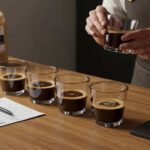











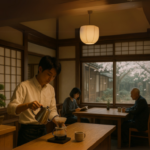




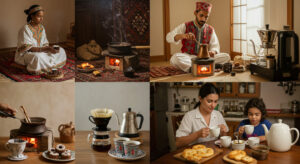



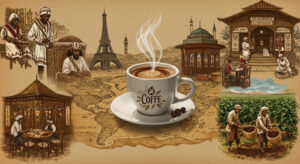

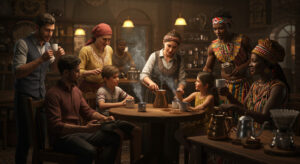


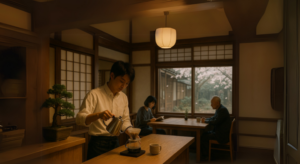
Post Comment